How to Improve the Security of Your Home Post-Disaster
After a disaster strikes, whether it's a natural calamity like a hurricane or an unforeseen event such as a burglary, the feeling of vulnerability can linger long after the immediate danger has passed. It's essential to take proactive steps to enhance your home's security, ensuring that you and your family feel safe and secure in your own space. This article explores essential strategies and tips for improving your home security post-disaster, providing you with peace of mind and a sense of control over your environment.
First and foremost, the journey to a safer home begins with a thorough assessment of your property. This means not only looking for visible damage but also identifying potential vulnerabilities that could be exploited by intruders. After a disaster, you may find that your home has been compromised in ways you didn't initially realize. Perhaps a window was left cracked, or a door frame was weakened. By taking the time to carefully evaluate these aspects, you can prioritize repairs and reinforcements that will bolster your security.
Once you've assessed the damage, it's time to focus on reinforcing entry points. Doors and windows are the primary access points for intruders, so strengthening these areas can make a significant difference. Consider investing in high-quality locks, which can deter unauthorized entry. Not all locks are created equal; some are more secure than others, and understanding the different types available can help you make an informed choice. For instance, deadbolts are typically stronger than standard locks, providing an extra layer of protection. On the other hand, smart locks offer convenience and can be monitored remotely, giving you peace of mind when you're away from home.
In addition to locks, securing your windows is equally crucial. You might think that a simple window latch is enough, but it’s often not sufficient against determined intruders. There are various options available, including window bars, security screens, and even alarms that can alert you if someone tries to tamper with your windows. By implementing these security solutions, you can significantly reduce the likelihood of a break-in.
Moreover, installing a comprehensive alarm system and surveillance cameras can provide an added layer of security. These systems not only deter potential intruders but also allow you to monitor your property remotely. With advancements in technology, many modern systems come equipped with features like motion sensors, night vision, and smartphone notifications, making it easier than ever to keep an eye on your home.
As you work on improving your home’s security, it’s also essential to develop a comprehensive safety plan for your family. This plan should outline emergency contacts, evacuation routes, and safety protocols to follow in case of another incident. Having a clear plan in place ensures that everyone knows what to do and where to go during an emergency, reducing panic and confusion.
One crucial aspect of your safety plan is maintaining an updated emergency contact list. This list should include key contacts such as family members, neighbors, and local emergency services. Make sure everyone in your household knows how to access this list, whether it's on paper or saved on their phones. In times of crisis, being able to quickly reach out for help can make all the difference.
Establishing clear evacuation routes and procedures is another vital component of your safety plan. Think about the best ways to exit your home and where to meet up with family members in case of an emergency. Practice these routes regularly so that everyone feels comfortable and confident in their ability to respond quickly. The more prepared you are, the less likely you are to panic when disaster strikes.
Finally, don’t underestimate the power of community resources and support. Engaging with local organizations can provide additional assistance for enhancing your home security post-disaster. Many communities offer programs that focus on disaster preparedness, home safety workshops, and neighborhood watch initiatives. These resources can be invaluable in helping you feel more secure and connected within your community.
- What should I do first after a disaster? Start by assessing your home for damage and vulnerabilities. Make necessary repairs to secure your property.
- How can I reinforce my doors? Consider installing high-quality deadbolts and security bars to enhance door security.
- Are smart locks worth the investment? Yes, smart locks offer convenience and can enhance security with features like remote monitoring.
- What types of alarm systems are available? There are various options, including monitored systems, DIY kits, and smart home integrations.
- How can I engage my community for support? Look for local organizations that offer safety workshops or community watch programs.
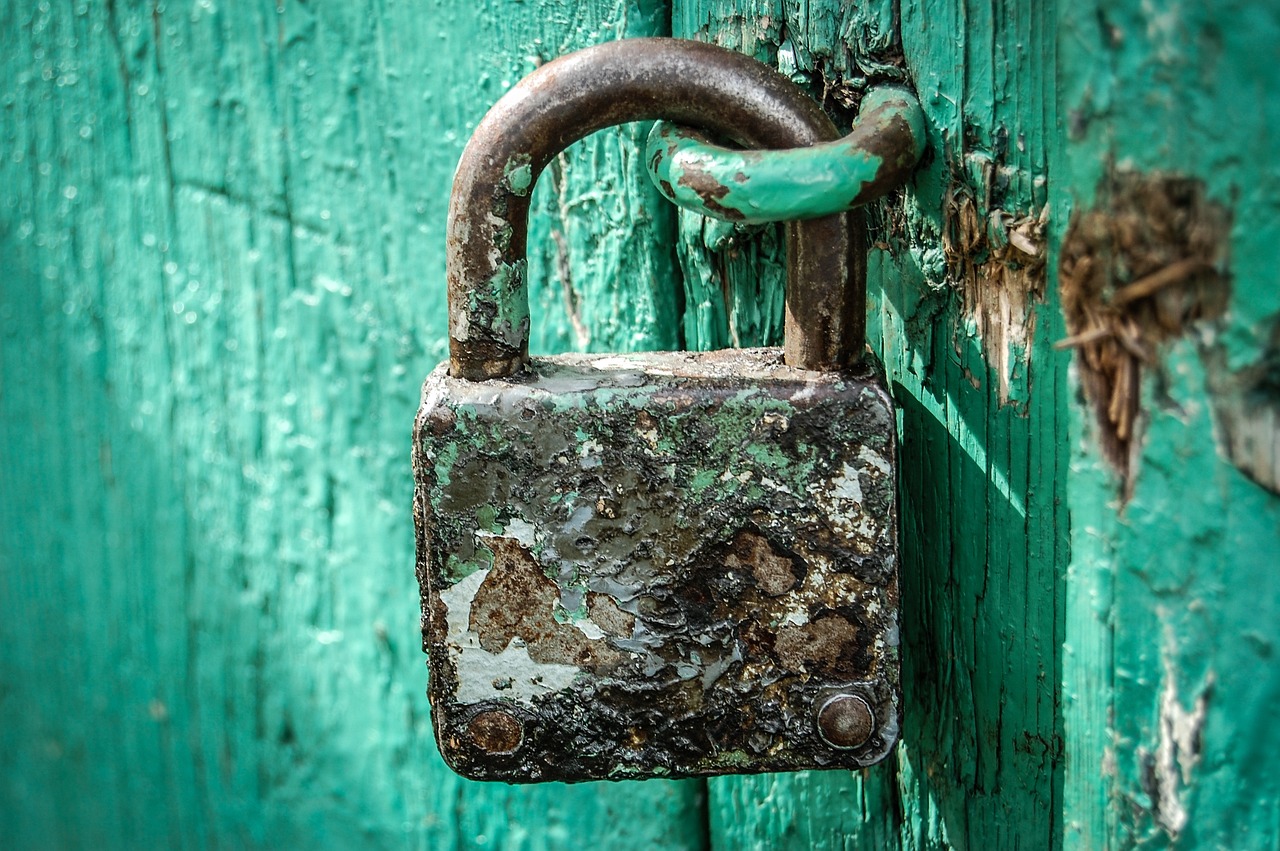
Assessing Damage and Vulnerabilities
After a disaster strikes, whether it’s a natural calamity like a hurricane or an unforeseen event such as a fire, the first step towards restoring your peace of mind is assessing the damage to your home. This process is not just about looking at the visible destruction; it’s about thoroughly evaluating your property for any hidden vulnerabilities that could compromise your safety. Imagine your home as a fortress; if the walls are crumbling, how can you feel secure inside?
Start by conducting a visual inspection of both the interior and exterior of your home. Look for signs of structural damage, such as cracks in the walls, sagging roofs, or damaged foundations. These issues not only affect the integrity of your home but can also create opportunities for intruders. If you notice any significant damage, it’s advisable to contact a professional to assess the situation further.
In addition to structural integrity, consider the security features of your home. Ask yourself questions like: Are the doors and windows intact? Do they have functioning locks? Are there any areas that seem particularly vulnerable? This self-assessment is crucial because it helps you identify not just what needs to be fixed, but also what could be improved to enhance your home’s overall security. For instance, if a window was broken during the disaster, not only do you need to replace the glass, but you might also want to upgrade the locking mechanism to something more secure.
Here’s a quick checklist of what to look for when assessing your home:
- Check for visible cracks or damages on walls and ceilings.
- Inspect doors and windows for any signs of forced entry or damage.
- Evaluate the condition of locks and security systems.
- Look for any debris that might obstruct entry points.
Once you’ve completed your assessment, it’s time to prioritize the repairs and improvements. Not everything can be fixed at once, so consider creating a repair timeline that focuses on the most critical vulnerabilities first. For example, if your front door is damaged but the back door is intact, addressing the front door should be your immediate priority. By organizing your repairs, you can ensure that your home is secure as quickly as possible.
Lastly, don’t hesitate to reach out to local authorities or community organizations for assistance. They often provide resources and support for homeowners in distress, helping you to not only assess your damage but also to find the right professionals to carry out repairs. Remember, the sooner you act, the better your chances of restoring your home to a safe and secure haven.

Reinforcing Entry Points
In the aftermath of a disaster, the last thing you want is to feel vulnerable in your own home. One of the most effective ways to bolster your home’s security is by . Think of your home as a castle; the stronger your walls and gates, the safer you’ll feel. If you’ve just experienced a natural disaster or any other crisis, taking steps to secure your doors and windows is paramount. Let’s dive into some practical strategies that can help fortify these crucial areas.
First and foremost, let’s talk about doors. Your front door is the main entry point for most homes, and it deserves special attention. A flimsy door can be an open invitation for trouble. Consider replacing standard doors with solid-core or metal doors, which provide significantly better resistance against forced entry. Additionally, ensure that the door frame is robust and that hinges are installed on the inside, making it more difficult for intruders to tamper with them.
Next up, locks! Not all locks are created equal. Investing in high-quality locks can make a world of difference. Look for locks that are certified by organizations like the American National Standards Institute (ANSI). Here’s a quick comparison of some popular lock types:
| Lock Type | Advantages | Disadvantages |
|---|---|---|
| Deadbolts | High security, resistant to picking | Can be difficult to install |
| Smart Locks | Convenient, can be controlled remotely | Dependent on batteries and technology |
As you can see, both deadbolts and smart locks have their pros and cons. It’s essential to evaluate your needs and choose accordingly. If you’re leaning towards smart locks, ensure they have a backup key option in case of a power outage or technical failure.
Moving on to windows, it’s easy to overlook them, but they can be a major weak point in your home’s security. Just as you wouldn’t leave your front door wide open, don’t leave your windows vulnerable either. Consider installing window locks that are specifically designed to prevent unauthorized access. Additionally, window bars or grilles can act as a deterrent, making it more difficult for anyone to break in. If you prefer a less invasive option, there are also window alarms available that can alert you if someone tries to tamper with them.
Lastly, don’t forget about your garage and any other entry points. Garages often contain valuable items and can serve as an entryway into your home. Ensure that garage doors are equipped with sturdy locks and consider installing a security system that includes motion sensors. This way, you can keep an eye on all points of entry, no matter where you are.
In summary, reinforcing entry points is a critical step in enhancing your home’s security after a disaster. By focusing on doors, locks, and windows, you can create a fortress-like environment that not only protects your belongings but also provides you with peace of mind. Remember, the goal is to make your home as secure as possible so that you can feel safe and sound, no matter what challenges come your way.

Installing High-Quality Locks
When it comes to securing your home, one of the most important investments you can make is in high-quality locks. Think of your locks as the gatekeepers of your sanctuary, standing between you and any potential intruders. But with so many options available, how do you choose the right locks for your home? Let’s dive into the world of locks and explore what makes them effective.
First, it’s essential to understand the different types of locks available on the market. Traditional deadbolts are a popular choice for many homeowners due to their durability and resistance to forced entry. They come in single and double-cylinder varieties, each offering unique benefits. Single-cylinder deadbolts are operated with a key from the outside and a thumb turn from the inside, while double-cylinder deadbolts require a key for both sides, providing added security but potentially posing a hazard during emergencies.
On the other hand, smart locks have gained popularity in recent years, thanks to their convenience and advanced technology. These locks can be controlled via a smartphone app, allowing you to lock or unlock your doors remotely. Imagine being able to let a friend in while you're at work or receiving alerts when someone enters your home. However, it's crucial to remember that while smart locks offer convenience, they also rely on technology that can be vulnerable to hacking.
To help you make an informed decision, here’s a quick comparison of deadbolts and smart locks:
| Feature | Deadbolts | Smart Locks |
|---|---|---|
| Security Level | High | Moderate to High |
| Convenience | Low | High |
| Cost | Generally lower | Generally higher |
| Power Source | None | Battery-operated |
While both options have their pros and cons, the best choice ultimately depends on your specific needs and lifestyle. If you prioritize traditional security, a deadbolt may be your best bet. However, if you love the idea of smart home technology, then investing in a smart lock could be worth it.
Regardless of the type you choose, ensuring that your locks are installed correctly is paramount. A poorly installed lock can compromise your home’s security, so consider hiring a professional locksmith for installation. They can also provide valuable insights on the best locks for your home’s specific vulnerabilities.
In conclusion, installing high-quality locks is a fundamental step in enhancing your home security post-disaster. By understanding the differences between various lock types and ensuring proper installation, you can significantly increase the safety of your home, giving you peace of mind that your loved ones and belongings are well protected.
- What is the best type of lock for home security? Deadbolts are often recommended for their strength, but smart locks can also provide excellent security with added convenience.
- How often should I change my locks? It's advisable to change your locks whenever you move into a new home or after a security breach.
- Can I install locks myself? While some locks can be installed by homeowners, it's best to hire a professional for optimal security.

Deadbolts vs. Smart Locks
When it comes to securing your home, the choice between deadbolts and smart locks can feel a bit overwhelming. Both options have their unique advantages, and understanding these differences is crucial for making an informed decision. Let's dive into the nitty-gritty of each to see which might be the best fit for your security needs.
Starting with deadbolts, these traditional locks are renowned for their robustness and simplicity. Made from solid metal, they are designed to resist forced entry, making them a reliable choice for securing your doors. The installation process is typically straightforward, and they can be fitted on most doors without much hassle. However, while deadbolts offer excellent protection against physical attacks, they do have their limitations. For instance, they lack the smart features that modern technology provides, such as remote access or alerts when someone attempts to enter your home.
On the other hand, smart locks bring a whole new level of convenience and security. Imagine being able to lock or unlock your door from anywhere using your smartphone! Smart locks often come equipped with features like keyless entry, temporary access codes for guests, and even integration with home automation systems. However, they do require a reliable power source and can be vulnerable to hacking if not properly secured. So, while they offer fantastic tech-savvy benefits, you need to ensure that your Wi-Fi network is secure to prevent unauthorized access.
To help you visualize the differences, here’s a quick comparison:
| Feature | Deadbolts | Smart Locks |
|---|---|---|
| Security Level | High (physical strength) | Moderate to High (depends on tech security) |
| Convenience | Manual operation | Remote access, keyless entry |
| Power Source | No | Requires batteries or power |
| Installation | Easy | Varies, can be complex |
| Vulnerability | Less susceptible to hacking | Potentially vulnerable if not secured |
Ultimately, the decision between deadbolts and smart locks boils down to your personal preferences and lifestyle. If you value simplicity and reliability, a deadbolt might be your best bet. However, if you’re looking for modern convenience and are comfortable with technology, smart locks could enhance your home security significantly. Just remember to weigh the pros and cons carefully, and choose what aligns with your security needs.

Window Security Solutions
When it comes to home security, windows are often the most overlooked entry points. Many people assume that simply having good locks on their doors is enough, but in reality, windows can be just as vulnerable to break-ins. To enhance your home’s safety, it's essential to consider various that can deter potential intruders and provide you with peace of mind.
One effective method is to install high-quality window locks. These locks come in various styles, from simple sliding locks to more advanced locking mechanisms that can withstand force. It's important to choose locks that are specifically designed for your type of window, ensuring they fit securely and operate smoothly. In addition to locks, consider adding window bars or grilles. While they may seem unappealing, these physical barriers can be a strong deterrent against break-ins, especially for ground-level windows.
Another option to consider is window alarms. These devices can be installed easily and will sound an alert if a window is opened or broken. With modern technology, many window alarms can even send notifications to your smartphone, allowing you to monitor your home in real-time, no matter where you are. This is particularly useful for those who travel frequently or spend long hours away from home.
For an added layer of security, you might also explore security film. This is a thin, transparent layer that can be applied to your windows, making them much harder to break. In the event of an attempted break-in, security film helps hold the glass together, preventing intruders from easily gaining access to your home. Plus, it can also provide additional benefits, such as UV protection and energy efficiency.
It's also worth mentioning the role of landscaping in window security. Keeping shrubs and trees trimmed can eliminate hiding spots for potential intruders. Additionally, consider installing motion-sensor lights around your windows. These lights will activate when they detect movement, making it difficult for anyone to approach your home unnoticed.
In summary, enhancing your window security is a multifaceted approach that includes installing high-quality locks, using alarms, applying security film, and being mindful of your landscaping. By taking these steps, you can significantly reduce the risk of a break-in and ensure that your home remains a safe haven for you and your family.

Alarm Systems and Surveillance
In today's world, where safety concerns are at an all-time high, alarm systems and surveillance cameras have become essential components of home security. After a disaster, the importance of these systems is magnified, as they provide peace of mind and a sense of control over your environment. Imagine being able to monitor your home while you're away or receiving instant alerts when something unusual occurs. This is not just a luxury; it's a necessity.
Alarm systems serve as the first line of defense against intrusions. They can be triggered by unauthorized entry, smoke, or even water leaks, alerting you and the authorities promptly. There are various types of alarm systems available on the market today, including:
- Monitored Systems: These systems are connected to a security company that monitors your home 24/7. If an alarm is triggered, the company can contact the police or fire department immediately.
- Unmonitored Systems: These alarms will sound off when triggered but do not alert any authorities. They rely on neighbors or passersby to call for help.
- Smart Alarm Systems: These are integrated with your smartphone, allowing you to control and monitor your home security remotely. You can receive notifications, view camera feeds, and even set off the alarm from anywhere.
When selecting an alarm system, consider your specific needs and the layout of your home. For instance, larger homes may require more sensors and cameras to cover all entry points effectively. Additionally, think about the integration with other smart home devices, as many modern systems can work in tandem with smart locks, lights, and even thermostats.
Surveillance cameras add another layer of security by providing visual monitoring of your property. These cameras can be placed strategically around your home to cover blind spots and high-risk areas. Here are some key features to look for in surveillance systems:
- High Definition (HD) Video: Clear video quality is crucial for identifying intruders.
- Night Vision: Many incidents occur after dark, so having cameras that can capture clear footage at night is essential.
- Remote Access: Being able to view live feeds from your smartphone or computer means you can monitor your home in real-time.
- Motion Detection: Cameras that send alerts when they detect movement can significantly enhance your security.
To maximize the effectiveness of your alarm systems and surveillance, consider creating a comprehensive security plan that includes regular maintenance checks on your equipment. Just like a car needs regular oil changes, your security systems need updates and tests to ensure they function correctly. Regularly review your security footage and test your alarm system to identify any potential issues before they become serious problems.
In summary, investing in a robust alarm system and surveillance cameras can significantly bolster your home security after a disaster. They not only deter potential intruders but also provide you with the reassurance that your home is being monitored, even when you're not there. So, take the time to research and choose the right systems for your needs, and enjoy the peace of mind that comes with knowing your home is protected.
Q: How can I choose the right alarm system for my home?
A: Assess your home's layout, the number of entry points, and your specific security needs. Consider whether you want a monitored or unmonitored system, and look for features like smart technology and remote access.
Q: Are surveillance cameras legal in residential areas?
A: Yes, surveillance cameras are generally legal in residential areas, but it's important to ensure they are positioned in a way that respects the privacy of neighbors and public spaces.
Q: How often should I test my alarm system?
A: It's recommended to test your alarm system at least once a month to ensure all components are functioning correctly.
Q: Can I integrate my alarm system with other smart home devices?
A: Yes, many modern alarm systems are designed to integrate seamlessly with other smart home devices, allowing for enhanced automation and control.
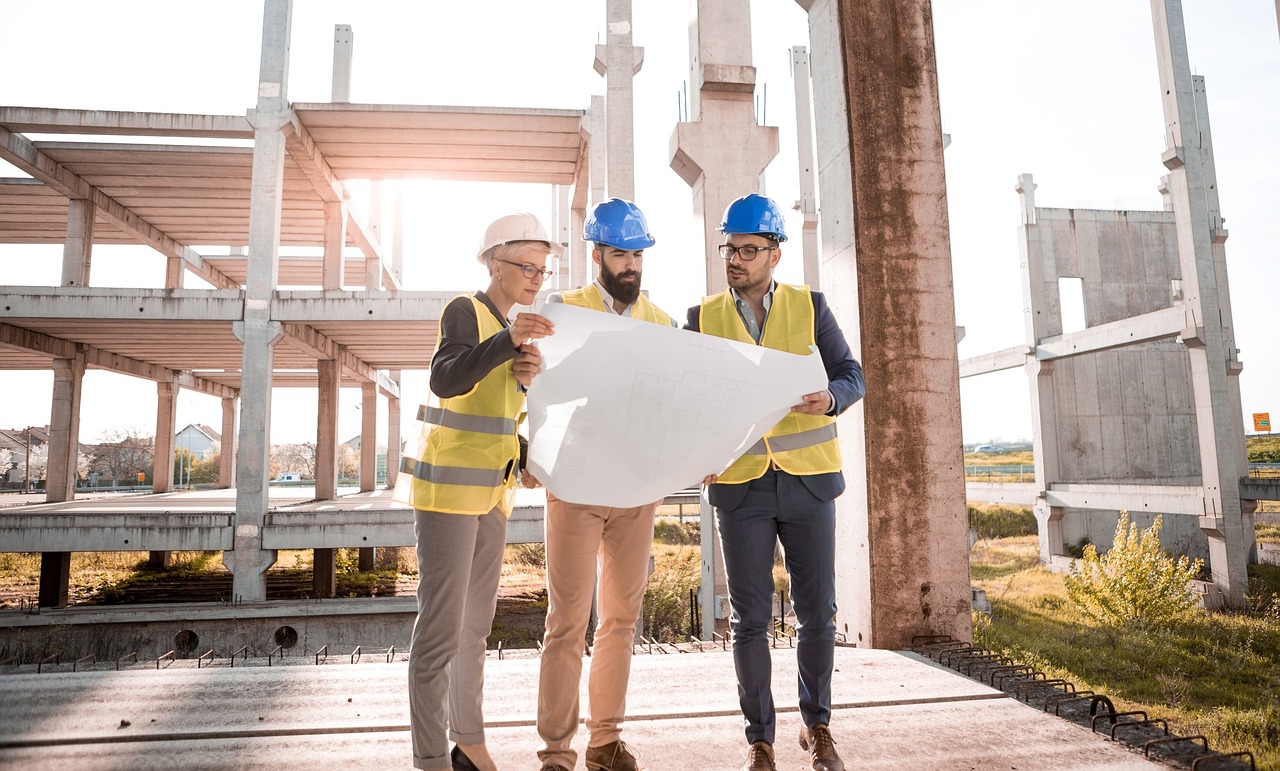
Creating a Safety Plan
When life throws a curveball, like a disaster, having a safety plan in place can be your lifeline. Think of it as your family’s roadmap to safety, guiding you through chaos and uncertainty. A well-structured safety plan not only prepares you for emergencies but also instills a sense of confidence and calmness amidst the storm. So, what does a comprehensive safety plan entail? Let’s break it down.
First and foremost, your safety plan should include an emergency contact list. This is crucial because, during a crisis, panic can cloud judgment, and you might forget who to call. Having a list readily available ensures that everyone knows exactly who to reach out to. Consider including:
- Family members
- Close friends
- Neighbors
- Your local emergency services
- Insurance agents
Next, let’s talk about evacuation routes and procedures. Imagine your home is a ship navigating through turbulent waters; having clear routes can help your family escape safely. Map out multiple evacuation routes from different rooms in your house and practice them regularly. You can use a simple diagram to illustrate these routes and hang it in a visible area of your home, like the kitchen or living room. Remember, in a real emergency, time is of the essence, and knowing exactly where to go can make all the difference.
Additionally, consider establishing a designated meeting point outside your home. This is where everyone can regroup after evacuating. It could be a nearby park, a neighbor’s house, or any safe location that everyone is familiar with. This way, you won’t waste precious moments searching for each other in the chaos.
Another vital component of your safety plan is to outline specific safety protocols to follow during different types of emergencies. For example, if a natural disaster strikes, you might need to take cover in a specific part of your home or evacuate entirely. If a fire occurs, knowing how to use fire extinguishers and where to find them can be lifesaving. Create a checklist of actions to take for various scenarios, and make sure every family member understands their role. Involving everyone in the planning process can also empower them and make them feel more secure.
Lastly, don’t forget to review and update your safety plan regularly. Life changes, and so do emergencies. Whether you move to a new home, have a new family member, or experience changes in your community, it’s essential to ensure your safety plan remains relevant. Schedule a family meeting at least once a year to discuss and practice your plan. This not only keeps everyone informed but also reinforces the importance of being prepared.
In summary, creating a safety plan is not just about writing things down; it’s about fostering a culture of preparedness within your family. By taking the time to assess risks, establish communication channels, and rehearse your plan, you’re not just preparing for the worst; you’re also building resilience. Remember, it’s better to be prepared and never need it than to need it and not be prepared!
| Question | Answer |
|---|---|
| How often should I update my safety plan? | It's advisable to review and update your safety plan at least once a year or whenever there are significant changes in your family or living situation. |
| What should I include in my emergency contact list? | Your emergency contact list should include family members, close friends, neighbors, local emergency services, and your insurance agents. |
| How can I ensure my family remembers the evacuation routes? | Practice the evacuation routes regularly and use visual aids, such as diagrams, to help everyone remember the paths. |
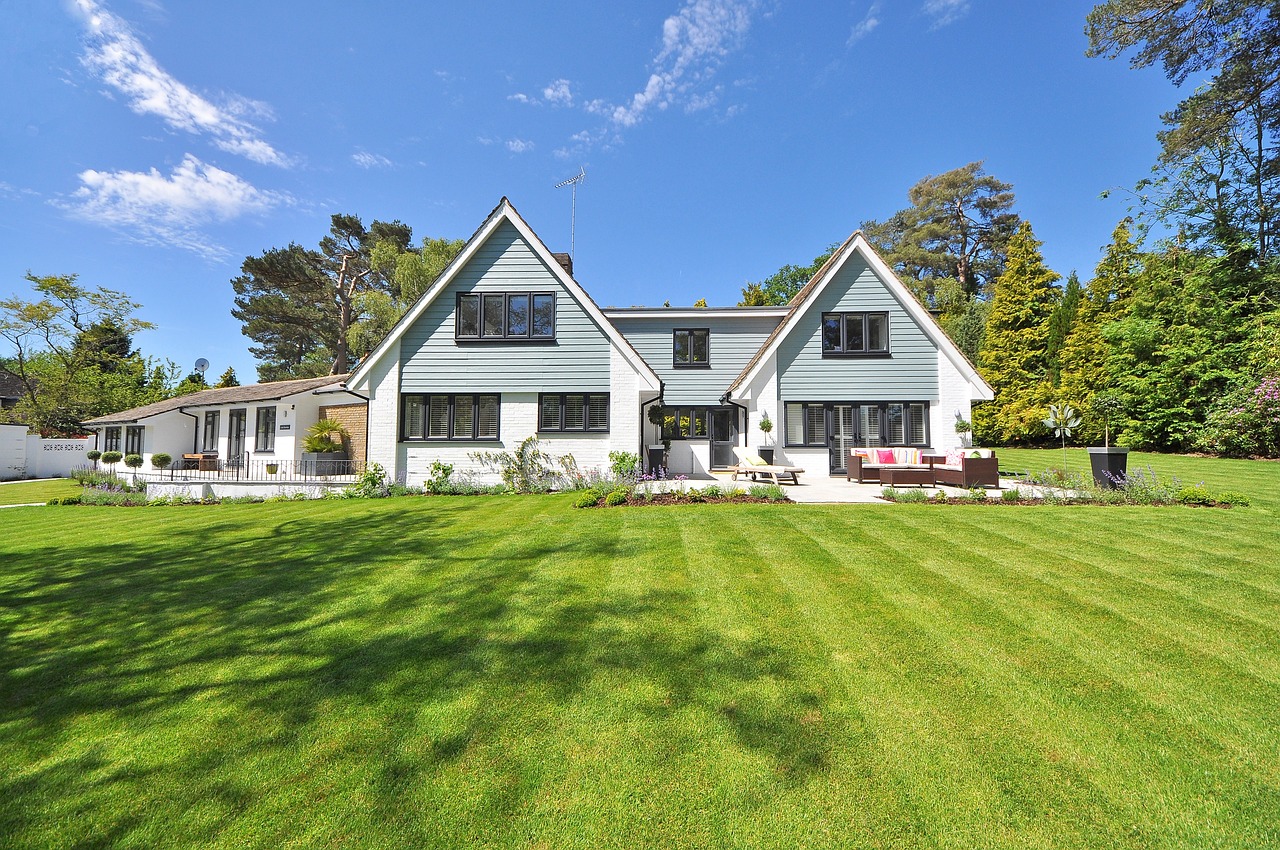
Emergency Contact List
Creating an is one of the most crucial steps in ensuring your family's safety in the aftermath of a disaster. Imagine a scenario where chaos reigns, and you need to reach out to someone for help or information. Having a well-organized list at your fingertips can make all the difference. Start by gathering the contact information of essential individuals and services that can assist you during emergencies.
Your emergency contact list should include:
- Family Members: Include the phone numbers of all immediate family members, as well as any extended family who may be able to help or provide support.
- Friends: List trusted friends who live nearby and can assist in case of an emergency.
- Local Emergency Services: Keep contact numbers for local police, fire departments, and hospitals. These are critical resources that you may need to reach quickly.
- Utility Companies: In case of outages or damage, having the numbers for your electricity, water, and gas companies is vital.
- Insurance Providers: Include your home and health insurance companies’ contact details to report claims or seek assistance.
It’s not enough just to jot down these names and numbers; you should also ensure that everyone in your household knows where to find this list. Consider placing it in a visible location, like on the refrigerator or in a family emergency kit. You might also want to store a digital copy on your phone or in a secure cloud service for easy access. Remember, in a moment of panic, every second counts, and having this information readily available can help streamline communication and decision-making.
Finally, it’s essential to keep this list updated. Regularly review and revise the contact information, especially if there are changes in your family’s circumstances or if any of the contacts have moved or changed their phone numbers. By keeping your emergency contact list current, you ensure that you can swiftly reach out to those who matter most when it truly counts.
Q: Why is having an emergency contact list important?
A: An emergency contact list is vital because it provides quick access to essential contacts during a crisis, ensuring that you can reach out for help or information without delay.
Q: How often should I update my emergency contact list?
A: You should review and update your emergency contact list at least once a year or whenever there are significant changes in your family or contact information.
Q: Where should I keep my emergency contact list?
A: Keep a physical copy in a visible location at home, such as on the refrigerator, and also store a digital version on your phone or in a secure cloud service for easy access.
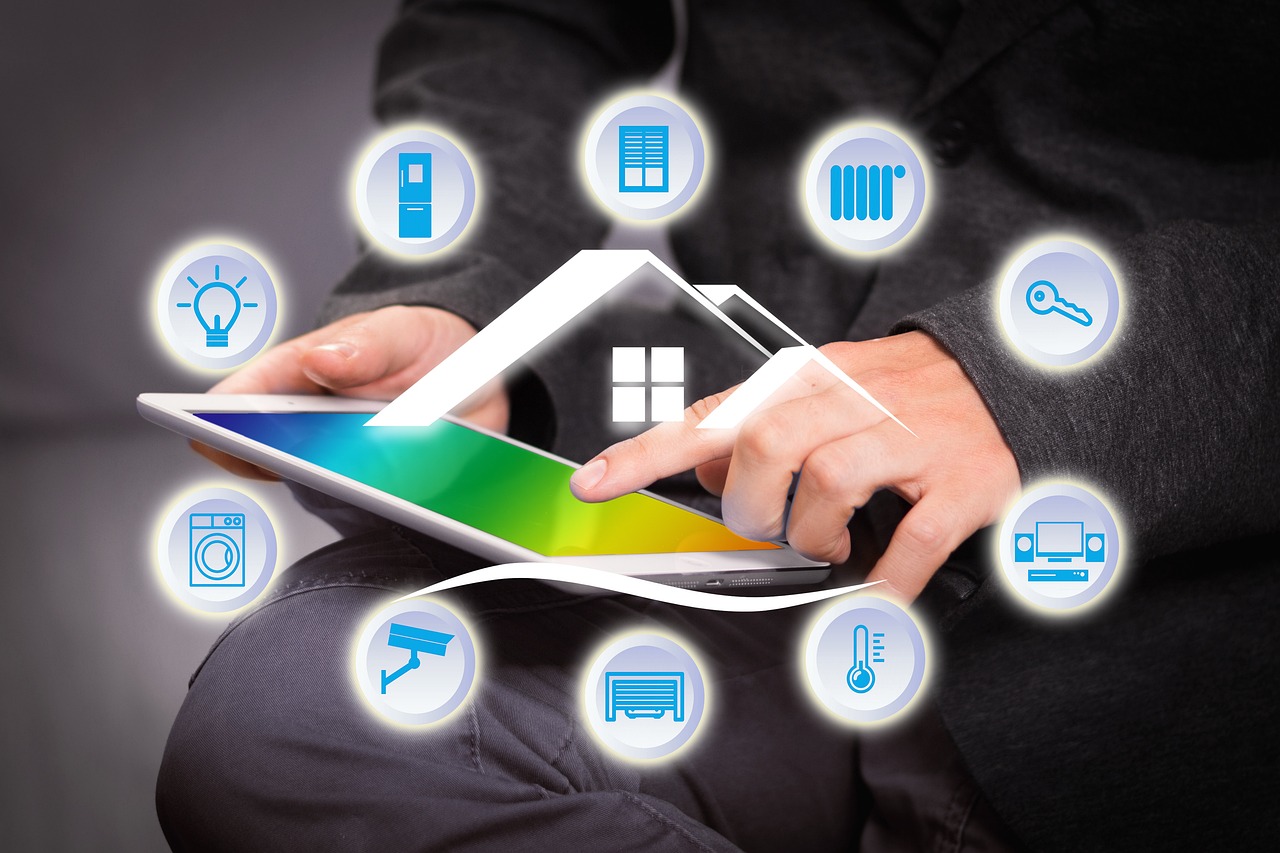
Evacuation Routes and Procedures
When disaster strikes, having clear evacuation routes and procedures in place can mean the difference between safety and chaos. Imagine being in the middle of a storm or an emergency situation where panic sets in. Wouldn’t it be comforting to know exactly where to go? That's why planning your evacuation routes ahead of time is not just a good idea; it's essential for your family's safety.
Begin by mapping out the safest and quickest routes from your home to designated safe locations, such as community centers or friend’s houses. Consider using a simple map or even a digital app to visualize these routes. Make sure to identify multiple paths in case one is blocked or unsafe. It’s a bit like having a backup plan for your backup plan!
In addition to identifying routes, it’s crucial to establish procedures that everyone in your household understands. This includes:
- Designating a meeting point: Choose a safe location where your family can regroup after evacuating. This should be a spot that everyone can easily remember and reach.
- Establishing communication methods: Make sure all family members have a way to communicate, whether through mobile phones or designated signal methods if phones are unavailable.
- Practicing the plan: Just like fire drills in school, practicing your evacuation routes can help ensure everyone knows what to do when the time comes. Regularly review the plan and make adjustments as necessary.
Moreover, keep in mind that different scenarios may require different responses. For example, if you need to evacuate due to a flood, your routes might differ from those taken during a wildfire. Always stay informed about the types of disasters that are common in your area and adapt your plans accordingly.
Finally, it's a good idea to keep an emergency kit ready and easily accessible. This kit should include essentials such as water, non-perishable food, first aid supplies, and important documents. When the moment comes, you don’t want to waste precious time gathering supplies. Instead, you can grab your kit and head out.
In conclusion, having well-defined evacuation routes and procedures is like having a lifeline during a crisis. It provides a sense of assurance and control in an otherwise overwhelming situation. So take the time to plan, practice, and prepare—your family's safety depends on it!
Q: How often should I review my evacuation plan?
A: It's advisable to review your evacuation plan at least twice a year, or whenever there are changes in your household or community.
Q: What should I include in my emergency kit?
A: Your emergency kit should include water, non-perishable food, a flashlight, batteries, a first aid kit, medications, and important documents.
Q: How can I ensure my kids understand the evacuation plan?
A: Use simple language and practice the plan regularly. Make it fun by turning it into a game or drill.
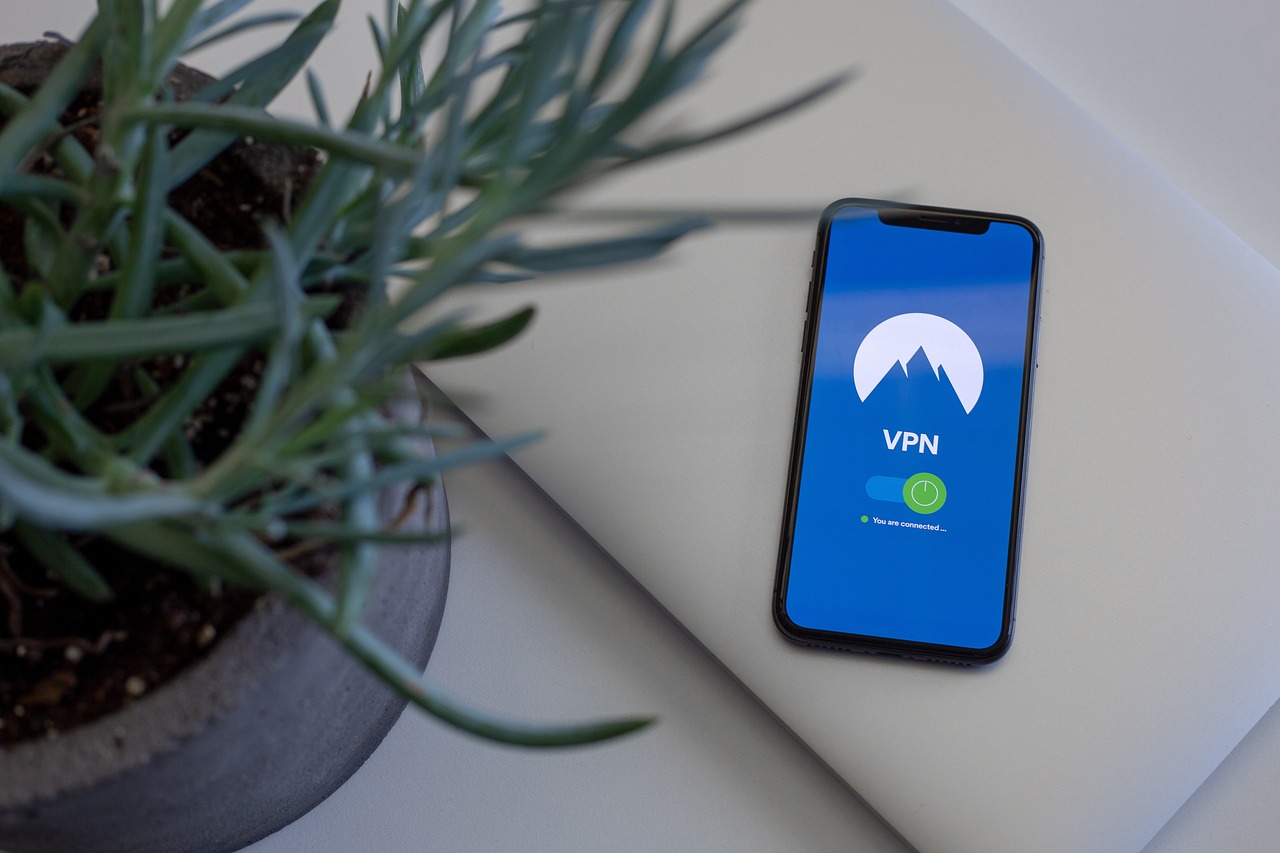
Community Resources and Support
After a disaster, the importance of community resources and support cannot be overstated. When the going gets tough, having a network of local organizations and initiatives can be a game-changer for enhancing your home security and overall safety. Think of your community as a safety net—one that can catch you when you fall and help you bounce back stronger than before. From neighborhood watch programs to local emergency management offices, the resources available can help you not only rebuild but also reinforce your home against future threats.
Many communities have established neighborhood watch programs that encourage residents to look out for one another. These programs foster a sense of camaraderie and vigilance, making it harder for intruders to target homes in your area. By participating in such initiatives, you can stay informed about local crime trends and safety tips that can help protect your home. Additionally, joining forces with your neighbors to form a united front can be incredibly empowering, as it cultivates a shared responsibility for safety.
Moreover, local government agencies often provide valuable resources post-disaster. They might offer workshops on home security improvements, grant programs for security upgrades, or even free consultations with security experts. Engaging with these agencies can provide you with the knowledge and tools necessary to make informed decisions about your home security measures. You might be surprised at what’s available right in your backyard!
Another vital resource is local non-profit organizations that focus on disaster recovery and community resilience. These organizations can provide assistance in various forms, such as:
- Financial aid for home repairs and security enhancements
- Access to training programs on emergency preparedness
- Networking opportunities with other residents who have experienced similar situations
In addition, many communities host regular meetings or forums where residents can come together to discuss safety concerns and share resources. Attending these gatherings can not only keep you informed but also allow you to build relationships with others who are committed to improving community safety. Remember, safety is often a collective effort, and the more involved you are, the stronger your community will be.
Lastly, don’t overlook the power of social media and online platforms. Many neighborhoods have dedicated groups where residents can share information about suspicious activities, safety tips, and upcoming community events. Being active in these online spaces can keep you connected and informed, ensuring that you’re never in the dark about what’s happening in your area.
In summary, leveraging community resources and support can significantly enhance your home security post-disaster. By engaging with local programs, participating in neighborhood watch initiatives, and tapping into available resources, you can create a safer environment for you and your family. Remember, you are not alone in this journey; your community is there to support you every step of the way.
Q: How can I find local community resources for disaster recovery?
A: You can start by checking with your local government websites, community centers, or social media groups dedicated to your neighborhood. These platforms often provide information on available resources and how to access them.
Q: What are some examples of community support programs?
A: Examples include neighborhood watch programs, local non-profit organizations focused on disaster recovery, and community workshops on home security and emergency preparedness.
Q: How can I get involved in my community's safety initiatives?
A: Attend local meetings, volunteer for neighborhood watch programs, or join online community groups. Engaging with your neighbors and local organizations is a great way to contribute to community safety.
Frequently Asked Questions
- What should I do first after a disaster?
After a disaster, the first thing you should do is assess the damage to your home. Look for structural vulnerabilities and any immediate safety hazards. It's crucial to ensure that your home is safe to enter before beginning any repairs.
- How can I reinforce my doors and windows?
You can reinforce your doors by installing high-quality deadbolts and adding strike plates. For windows, consider using window locks, security bars, and even installing window alarms to deter intruders. Strengthening these entry points significantly enhances your home security.
- Are smart locks better than traditional deadbolts?
Smart locks offer convenience, as they can be controlled remotely and often include features like temporary access codes. However, traditional deadbolts are typically more reliable during power outages. Weigh the pros and cons based on your lifestyle and security needs.
- What types of alarm systems should I consider?
There are various alarm systems available, including monitored systems that alert authorities and unmonitored systems that only sound an alarm. You can also opt for systems that integrate with surveillance cameras for comprehensive monitoring of your property.
- How do I create an effective safety plan for my family?
Start by developing an emergency contact list that includes important numbers, such as family members and local authorities. Next, outline clear evacuation routes and procedures. Make sure to communicate this plan with all family members and practice it regularly.
- What community resources are available for post-disaster support?
Many local organizations offer resources for disaster recovery, including community centers, non-profits, and local government initiatives. These resources can provide assistance with home repairs, security measures, and emotional support during recovery.



















